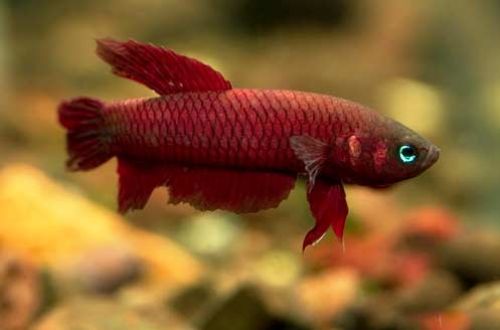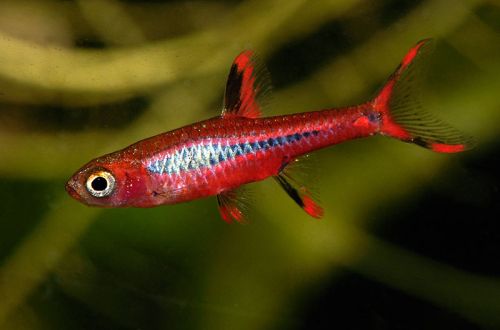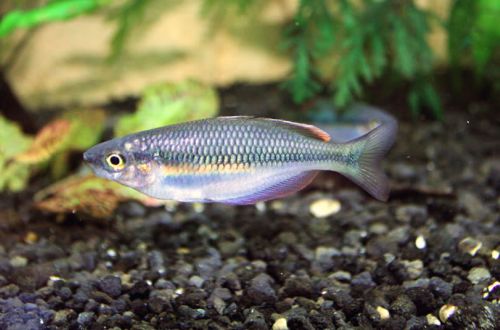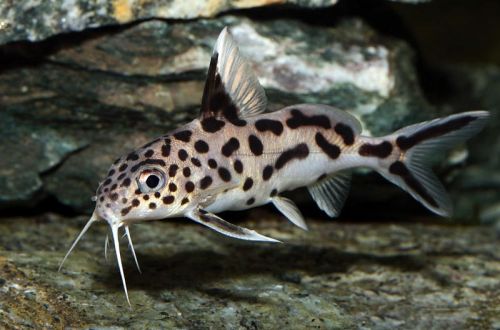
catfish cuckoo
The cuckoo catfish or Synodontis cuckoo, scientific name Synodontis multipunctatus, belongs to the Mochokidae family. A unique catfish that lives in the only lake in Africa. But this is not its only feature, another is a method of reproduction. The catfish throws eggs into the laying of other fish so that they take care of its offspring. Easy to keep and unpretentious, can be recommended to beginner aquarists.

Contents
Habitat
Endemic to the African Lake Tanganyika, located on the border of four states at once: the Democratic Republic of the Congo, Burundi, Tanzania and Zambia. The natural habitat is characterized by sandy substrates mixed with rocks. Aquatic higher plants are practically absent.
Brief information:
- The volume of the aquarium – from 100 liters.
- Temperature – 24-28°C
- Value pH — 7.5–8.5
- Water hardness – high (13–35 dGH)
- Substrate type – sandy, rocky
- Lighting – subdued
- Brackish water – no
- Water movement is weak
- The size of the fish is up to 15 cm.
- Nutrition – any drowning
- Temperament – peaceful
- Content is single or in a small group in the presence of shelters
Description
Adult individuals reach a length of about 15 cm. Sexual dimorphism is weakly expressed. There are no obvious differences between males and females. The coloration is light cream in color with brown spots all over the body. The fins are dark with a white border.
Food
Catfish is undemanding to the diet. Accepts dry, frozen, live and vegetable products. The daily diet may consist of peas, slices of cucumber, pumpkin, zucchini, etc., combined with bloodworms, brine shrimp. Dry sinking food (flakes, granules) can serve as an excellent alternative.
Maintenance and care, arrangement of the aquarium
The optimal volume of the aquarium for a couple of fish starts from 100 liters. The design is simple, it is enough to use soft sandy soil, stones, pieces of rock, from which shelters can be formed in the form of caves, grottoes, crevices. Live plants are not required. The lighting level is subdued. If there is a lot of light, then the Cuckoo Catfish will hide and come out of the shelter only at night.
The most important condition for successful keeping is the maintenance of stable water conditions with suitable hydrochemical values. To do this, you will need to install a productive filtration system and carry out a number of mandatory procedures for the care of the aquarium. The latter include weekly replacement of part of the water (15–20% of the volume) with fresh water and regular removal of organic waste.
Behavior and Compatibility
Keeping in a group of 4 individuals, with a smaller number in a large aquarium, can become overly secretive. Synodontis cuckoo is perfectly compatible with the cichlids of Lake Tanganyika. The only limitation is that too small fish, which can become an accidental victim of catfish, cannot be settled.
Breeding / breeding
Breeding in a home aquarium is difficult due to the unique breeding strategy. The cuckoo catfish is one of the few fish that use a parasitic spawning method. In nature, the catfish lays (imperceptibly tosses) already fertilized eggs into the masonry of cichlids, which take them into their mouths along with their eggs. Carrying eggs in the mouth is common among African cichlids living in lakes Tanganyika and Malawi. Synodontis fry appear earlier and eat cichlid eggs, and then leave their shelter when the time is right.
This way of spawning resembles the behavior of Cuckoo birds, which throw their eggs into the nests of other birds. This common feature is reflected in the name of this species.
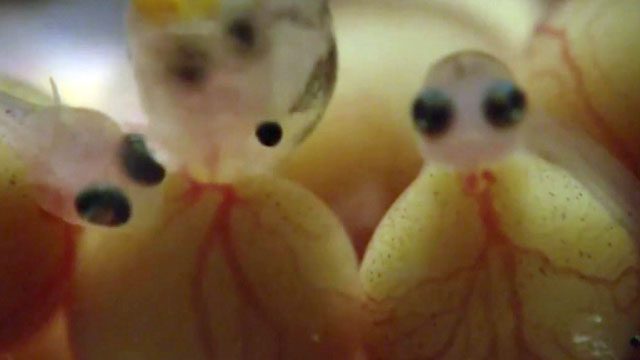
Fish diseases
In favorable conditions, health problems are not observed. The risk of this or that disease increases with a significant decrease in water quality, fluctuations in pH and dGH values and / or an increase in the concentration of toxic products of the nitrogen cycle (ammonium, nitrates, nitrites). Read more about symptoms and treatments in the Aquarium Fish Diseases section.



